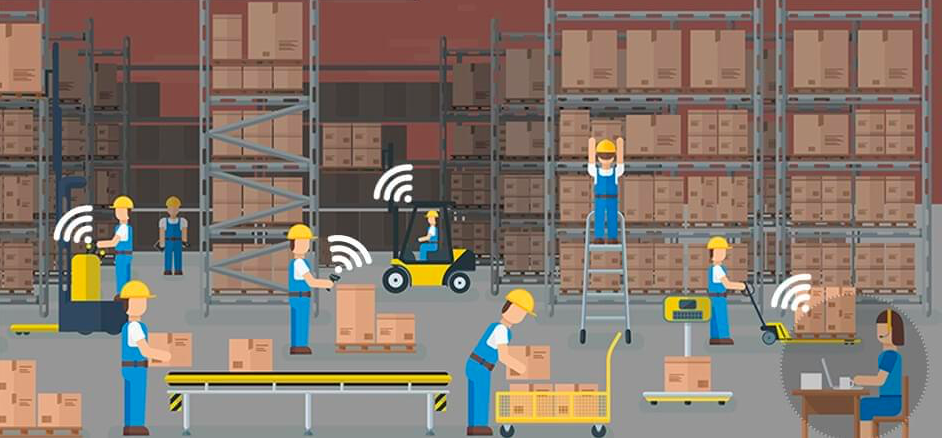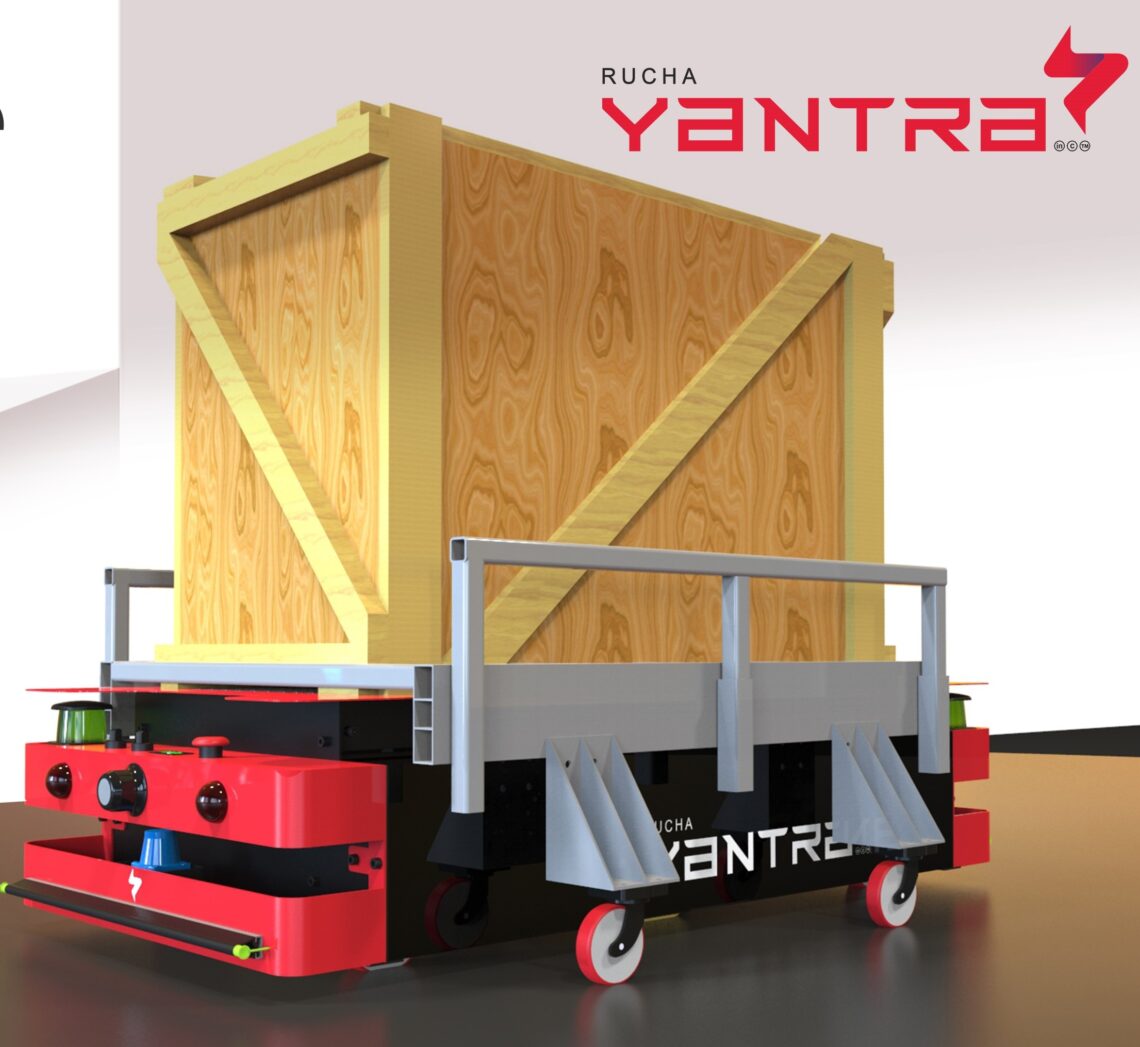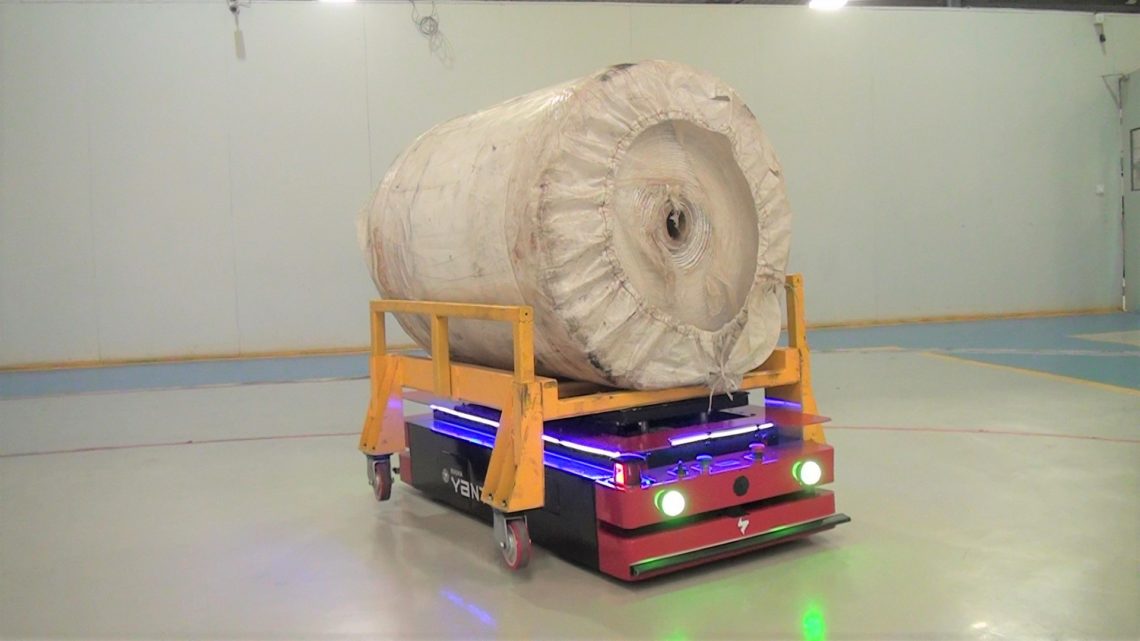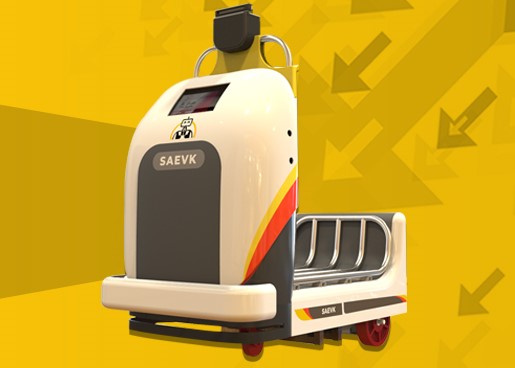“Deep learning is not just about building intelligent machines, it’s about building machines that can learn to build themselves.” – Yann LeCun, Chief AI Scientist at Facebook and Deep Learning Pioneer. Imagine a world where computers can understand and think just like us humans. A world where they can recognize images, comprehend language, and make decisions, all on their own. This may sound like science fiction, but thanks to a subset field in AI, called Deep Learning, this possibility is becoming closer to reality. Welcome to another series of blogs by Rucha Yantra which focuses on Deep Learning and its impact on manufacturers. In the first blog, we will delve…
-
-
A Brief on Warehouse Automation
Continuing our series on automation, we have now brought up the topic of Warehouse Automation. Warehouse automation is a significant contributor to the growth and economy of a country. There are approximately 167,610 warehouses worldwide, with more than 80% lacking automation. The warehouse automation industry is going to boom under Industry 4.0. Robotics, logistics, and other warehouse automation technologies are anticipated to reach a global value of over $22.4 billion. The need for warehouse automation is immense as the majority of operating budgets for warehouse facilities are composed of roughly 65% labor costs! Warehouse automation also brings safety to the environment. The number of forklift-related accidents alone totals nearly 100,000…
-
How robotics is re-engineering the warehousing dynamics
The manufacturing world is no stranger to technological transformations. Robotics is one such transition that has been in the works for decades and is coming into its own. It is yielding higher revenue and drastically reducing costs for firms globally. Warehouse robotics essentially involves using state-of-the-art automated systems, robotic machines, and software for executing routine, run-of-the-mill tasks in the warehouse. Once looked at with much skepticism, these robotic elements have risen to a position where companies insist on them being an inextricable part of the supply chain. The larger question that many Indian companies remain unconvinced about is the possible benefit that will accrue to their bottom line by using…
-
IoT and the Transformation of Material Handling
As we continue the series of focused blogs on next-gen technologies, we shall now look at how the Internet of Things promises to transform material handling forever. Any improvement in material handling, which plays a pivotal part in any industry’s supply chain, translates into meaningful business value. Manufacturers and warehouse owners continuously try to speed up processes, increase worker efficiency, avoid product damage, and ensure overall safety. With the embrace of IoT, industry players can hope to improve on all these aspects. Let us see how! Increased visibility For years, sensors and tags – RFID and barcode – have been used to track materials and products through the warehouse. Real-time…
-
IoT and The World of Autonomous Material Handling
In the last blog, we glimpsed into how the Internet of Things revolutionizes businesses and, ultimately, our lives. Connecting every possible physical object on the shop-floor to the internet via sensors leads to the generation of a massive amount of insightful data. Data that can be used to make processes more efficient, reduce costs and, increase output. IoT brings together data-acquiring sensors, internet, cloud computing, and analytics capabilities to deliver real-time information to business leaders to make effective smart decisions. We ask, what if the power of IoT can be used to improve the design and usage of autonomous material handling equipment like AGVs and AMRs? Read on to see…
-
Mobile Robots for Warehousing
Warehousing is the age-old process of storing goods safely after they are brought from manufacturer and before shipping them off to the distributor or customer. Though the definition remains the same, the process has undergone a considerable change over the years. With the increasing diversification of logistics and enterprise models, warehousing has also been modernized to a great extent. During this unprecedented COVID-19 situation, world economy has definitely seen a rise in e-commerce sales and trade, leading to increase in the demand for optimum warehousing solutions specially for e-commerce giants like #Amazon and #Flipkart. The latest trend in this is Warehousing Robots. At Rucha Yatra LLP we focus on building commercial…
-
Maximum ROI in Corona Times
Everything you read or hear these days is about coronavirus, be it an article in newspaper, a blog on your favorite website, discussions on TV or every other post on social media. Then why the need of one more article, you’d ask. Well, amid these never-ending lockdowns and social distancing which have now become a norm, we thought of bringing some positivity to all you industries out there! This global pandemic is affecting every industry in one way or the other. So, how do we function to achieve what we had planned? In today’s article “Maximum ROI in Corona Times” we are going to see exactly the same – how…
-
AGVs in Textile
Material Handling in manufacturing sector refers to the movement of any kind of material/load within the limits of shop floor or at the most to the transportation vehicles or warehouses. Auto Guided Vehicles (AGVs) are the newest trend in material handling. AGVs are portable robots, which follow a prefixed path for navigation. They can tow the material stored on trailers and trolleys attached behind them or can store the material on the overhead beds for conveyance. They are used to transport loads in a manufacturing facility or a warehouse, where repetitive movement of material is required with little or no human interaction. Now a days, they are deployed in nearly every…
-
SAEVK: Human Guided Vehicle
We know that Automated Guided Vehicles (AGVs) are portable robots which follow a prefixed path for navigation. They can tow the material stored on trailers and trolleys attached behind them or can store the material on the overhead beds for conveyance. They are used to transport loads in a manufacturing facility or a warehouse, where repetitive movement of material is required with little or no human interaction. Now a days, they are deployed in nearly every industry including automobile, food, pharmaceuticals, textiles and much more, their scope ranging from handling raw materials to finished products. We have plenty of articles about AGVs and their applications in our Knowledge Corner series…
-
RAGHAV in Small Industries
If you have read our previous articles in the tech blog series, you must know RAGHAV very well by now. For those who haven’t, RAGHAV is our first ever adaptable AGV for material movement. Till now we have seen how various manufacturing industries like Automobile, Pharmaceuticals and Food processing can benefit with RAGHAV. We agree that these are comparatively bigger industries, meaning that the production volumes and capital they can invest, both are higher and hence they prefer to use modern machinery and equipment like AGVs to transport load. What about the small-scale industries? We all know that India being a developing country, majority of our industries are smaller in…








